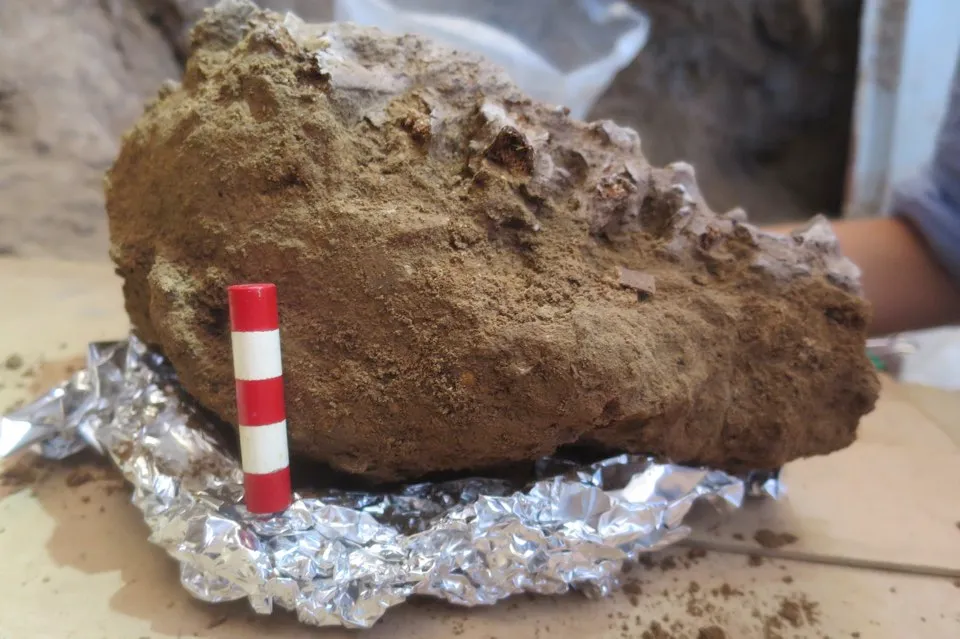- Shanidar Z Neanderthal skeleton more than 70,000 years old and has the teeth of a “middle- to older-aged adult”.
- The presence of pollen seen by some archaeologists as evidence Neanderthals not only buried their dead, but did so with flowers.
- Burial site suggests Neanderthals had "cultural complexity of a high order".
A 70,000-year-old Neanderthal skeleton found in the foothills of Iraq has reopened the decades-long debate as to whether the ancient humans were culturally sophisticated enough to perform death rituals.
The remains, consisting of a crushed but complete skull, upper thorax and both hands, were recently unearthed at the Shanidar Cave site 500 miles north of Baghdad.
Although its sex is yet to be determined, early analysis suggests the skeleton, named Shanidar Z, is more than 70,000 years old and has the teeth of a “middle- to older-aged adult”.

The cave has also been home to remains of 10 other Neanderthal people excavated around 60 years ago, with clumps of ancient pollen surrounding one of the skeletons.
The presence of pollen was seen by some archaeologists as evidence that these hominid species not only buried their dead but did so with flowers, challenging the widely-held belief that Neanderthals were dumb and animalistic.
The discovery of pollen captured the public imagination and the Shanidar Cave became famous as the “flower burial” site.
Read more about Neanderthals:
- Neanderthals may have died out without help from modern humans
- Neanderthals collected shells at the beach, just like us
- The invention of spears and bows and arrows may have helped early humans drive Neanderthals to extinction
Chris Hunt, a professor of cultural paleoecology at Liverpool John Moores University, described Shanidar Z as “a truly spectacular find”.
He said: “The upper remains are staggeringly complete, although the skull was flattened by compression under many tons of cave sediment.
“The body was placed in a depression on the cave floor in a semi-reclining position, with a big stone lying behind the head.”

Four of the 10 Neanderthals at the site were positioned in what the researchers described as a “unique assemblage”, raising a question as to whether they were returning to the same spot to lay their dead.
Prof Hunt said: “We have four bodies within an area the size of a small dinner table and chairs.
“If we were dealing with modern people, this might merit the use of the word ‘graveyard’, but this is a step too far for our understanding of Neanderthal behaviour.”
Professor Graeme Barker, from Cambridge University’s McDonald Institute of Archaeology, said: “The new excavation suggests that some of these bodies were laid in a channel in the cave floor created by water, which had then been intentionally dug to make it deeper.
“There is strong early evidence that Shanidar Z was deliberately buried.”

The team is also analysing sediment samples from Shanidar Z, along with traces of pollen and charcoal from the site, to find out more about the life of the Neanderthals.
Dr Emma Pomeroy, from Cambridge University’s department of archaeology and lead author on the study, published in the journal Antiquity, said: “In recent years we have seen increasing evidence that Neanderthals were more sophisticated than previously thought, from cave markings to use of decorative shells and raptor talons.
“If Neanderthals were using Shanidar cave as a site of memory for the repeated ritual interment of their dead, it would suggest cultural complexity of a high order.”
Reader Q&A: Could we clone a Neanderthal?
Asked by: Odysseus Ray Lopez, US
The Neanderthal genome was sequenced in 2010. Meanwhile, new gene-editing tools have been developed and technical barriers to ‘de-extinction’ are being overcome. So, technically, yes, we could attempt the cloning of a Neanderthal.
It would involve introducing Neanderthal DNA into a human stem cell, before finding a human surrogate mother to carry the Neanderthal-esque embryo. However, there’d likely be mismatches between mother and embryo that might make the endeavour unfeasible. And, given that the Neanderthal is our closest relative, its cloning would likely be regulated as whole human or reproductive cloning, which in most countries is illegal.
Read more:
